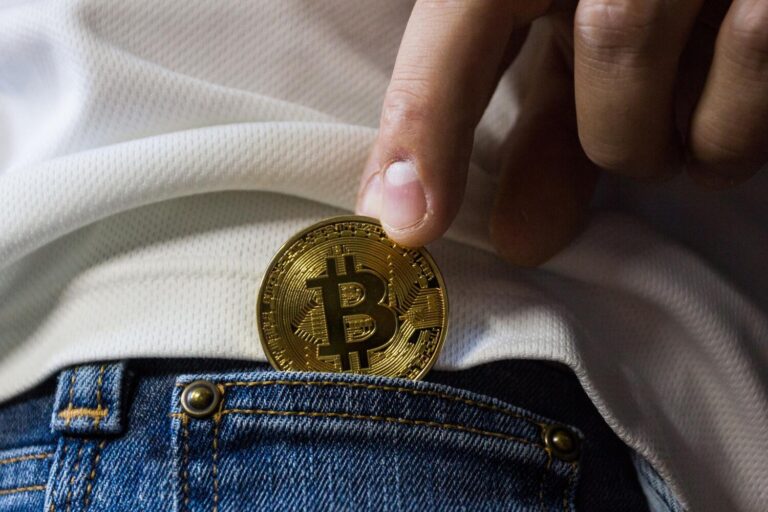How to Create, Buy, and Sell NFTs: Easy Guide

While NFTs have been around since the launch of Bitcoin in 2009, the market has only recently taken off. Non-fungible tokens (NFT) have become one of the biggest crypto crazes of 2020 and 2021. NFT sales totaled $95 million in 2020, and in just the first half of 2021 sales reached nearly $2.5 billion.
Digital artist Mike Winkelman, known as Beeple, recently sold an NFT for $69 million, and soccer great Lionel Messi recently launched his own NFT collection. But you don’t have to be famous to create or trade NFTs. Read on to learn more about the NFT market, and how you can use these digital assets.
NFTs 101
NFTs are collectible crypto assets, intended to represent a unique digital item that can be bought, sold, or traded.
The term “fungible” refers to something that can be interchanged for something else just like it. A dollar bill, for example, is fungible because all dollar bills are more or less the same. Non-fungible tokens, then, are digital items that cannot be duplicated, such as:
- Artwork
- Music
- Collectibles, like trading cards
- Items within video games like skins, weapons, or avatars
- Virtual land
The possibilities are almost endless. Individuals can now create something digital, put a unique stamp on it within the blockchain network, and sell it to someone without needing a third-party intermediary like an art broker or pawn shop.
How to Buy NFT Tokens
In some ways, trading NFT tokens is similar to trading other kinds of crypto. Before learning how to buy NFT tokens, there are a few things worth considering, such as:
• What marketplace do you intend to use?
• Which cryptocurrency will be needed to fund your crypto wallet and make the purchase?
• Are the NFTs you’d like to buy only available at a certain time?
Some NFTs are only available on certain platforms. Someone who wants to buy an NBA Top Shot pack of virtual trading cards, for example, must open an account with NBA Top Shot and create a Dapper wallet.
The buyer will then fund their wallet with either the USDC stablecoin or any number of supported fiat currency options. After that, a buyer will have to wait for a card pack drop and buy a pack before they sell out.
NFT drops have become a popular method of selling NFTs to eager buyers. Drops like these often require users to sign up and have their accounts funded prior to the drop so they don’t miss their chance to buy once the NFTs drop.
Drops can sell out in a matter of seconds, so being ready ahead of time can be crucial. Of course, there are other NFTs and NFT platforms that don’t utilize drops. The main things to keep in mind when pondering the question “how to buy NFT tokens” are what wallet to use, which cryptocurrency you’ll use, and what platform to use.
How to Create NFT Art
What about those who are uninterested in learning how to buy NFT tokens and instead want to create their own? Creating a piece of NFT artwork is fairly straightforward and does not require in-depth knowledge of the crypto industry.
Before beginning, a creator will have to figure out which blockchain on which they want to issue their NFTs. Ethereum is the most popular blockchain service for this purpose at this time, but a variety of other blockchains are gaining in popularity, such as:
- Cosmos (ATOM)
- Tezos
- Polkadot
- Tron (TRX)
- Flow by Dapper Labs
- Binance Smart Chain
Each blockchain comes with its own unique NFT token standard, marketplaces, and wallet services. If someone were to create NFT tokens on Binance Smart Chain, for example, traders can only use those NFTs on platforms that support Binance Smart Chain assets. So, they couldn’t sell them on an NFT marketplace like OpenSea which is based on Ethereum.
Since Ethereum is the most commonly used NFT ecosystem, let’s look at what’s needed to mint a new NFT on the Ethereum blockchain. First, an NFT creator would need an Ethereum wallet that supports ERC-721, Ethereum’s NFT token standard. Some wallets that qualify include Coinbase Wallet, MetaMask, Trust Wallet, Enjin, and D’Cent.
An NFT creator will also need about $50 – $100 worth of Ether (ETH) tokens. Those using the Coinbase wallet can buy ETH from Coinbase with US dollars or another fiat currency. Other users will have to purchase ETH from a crypto exchange and send it to the wallet they set up in the previous step.
How to Create NFT Art: Using a Marketplace
After creating a wallet and funding it with ETH, it’s time to choose a platform. A variety of NFT-focused platforms allow users to connect their wallets and upload the images or files that they’d like to turn into NFTs.
Some popular NFT marketplaces on Ethereum include:
- Mintable
- Rarible
- OpenSea
These three marketplaces all have a “create” button located in the upper-right corner. Let’s look at how things work in OpenSea.
Clicking “create” takes you to a screen that asks to connect to your Ethereum-based wallet. After entering the wallet password as requested, the wallet will connect with the marketplace. You might have to sign a message in their Ethereum wallet to prove they own it.
Next, you would hover over the “create” button and select “my collections.” Then you would click the blue “create” button. A window will pop up that lets you upload the image or file you want to turn into an NFT. Add your name, and write a description. Basically, you’re creating a folder where you can place the NFTs you create.
After assigning an image for the collection, it will appear on the left-hand side of the screen. Then you’ll have to add a banner image by selecting the pencil icon on the top right.
At this point, you can start creating NFTs. Click on “Add New Item” and sign a message with your wallet. You’ll then arrive at a new window where you can upload the item you want to turn into an NFT, whether It be audio, an image, or a GIF.
On OpenSea and similar platforms, users can also add special attributes to make their NFTs more unique. You can also add special content that can only be opened by the buyer. This could include things like discount codes or passwords that let buyers access particular services.
After finishing, clicking “create” at the bottom of the page and signing another wallet message will confirm that you have created your NFT. The token will then show up in your collection.
How to Sell NFTs
Once you’ve purchased an NFT, you’ll need to decide whether you want to HODL it, or sell it. To sell an NFT, you must list the token on a marketplace. To do this, click on the NFT in your collection that you’d like to sell and locate the “sell” button. Clicking on “sell” will bring up a pricing page, allowing you to set the terms of the sale. You can choose either a fixed price or an auction sale.
NFTs typically sell for ETH or ERC-20 tokens. Some platforms only let you sell for the native token of their blockchain, however.
NFT creators can also earn royalties for their artwork each time someone sells their tokens to a new person. In OpenSea, you set this up by clicking the “edit” button and making use of the option to program royalties into an NFT. You would receive royalties through a variety of ERC-20 tokens. Once they’ve selected that option, creators earn royalties automatically through smart contracts.
The Takeaway
Overall, it’s not that hard to learn how to buy NFT tokens or to create and sell them. Developers have created graphic user interfaces that make the process as painless as possible. Of course, having previous experience with using cryptocurrency wallets will be a big help.
If you’re ready to start trading crypto, but not quite up for buying and selling NFTs, a great way to get started is by opening an account on the SoFi Invest Brokerage Platform. You can use the platform to trade Bitcoin, Ethereum, Dogecoin and other cryptocurrencies directly from your phone.
Disclosures:
SoFi Invest®
The information provided is not meant to provide investment or financial advice. Investment decisions should be based on an individual’s specific financial needs, goals and risk profile. SoFi can’t guarantee future financial performance. Advisory services offered through SoFi Wealth, LLC. SoFi Securities, LLC, member FINRA / SIPC . SoFi Invest refers to the three investment and trading platforms operated by Social Finance, Inc. and its affiliates (described below). Individual customer accounts may be subject to the terms applicable to one or more of the platforms below.
1) Automated Investing—The Automated Investing platform is owned by SoFi Wealth LLC, an SEC Registered Investment Advisor (“Sofi Wealth“). Brokerage services are provided to SoFi Wealth LLC by SoFi Securities LLC, an affiliated SEC registered broker dealer and member FINRA/SIPC, (“Sofi Securities).
2) Active Investing—The Active Investing platform is owned by SoFi Securities LLC. Clearing and custody of all securities are provided by APEX Clearing Corporation.
3) Cryptocurrency is offered by SoFi Digital Assets, LLC, a FinCEN registered Money Service Business.
For additional disclosures related to the SoFi Invest platforms described above, including state licensure of Sofi Digital Assets, LLC, please visit www.sofi.com/legal. Neither the Investment Advisor Representatives of SoFi Wealth, nor the Registered Representatives of SoFi Securities are compensated for the sale of any product or service sold through any SoFi Invest platform. Information related to lending products contained herein should not be construed as an offer or pre-qualification for any loan product offered by SoFi Lending Corp and/or its affiliates.
Crypto: Bitcoin and other cryptocurrencies aren’t endorsed or guaranteed by any government, are volatile, and involve a high degree of risk. Consumer protection and securities laws don’t regulate cryptocurrencies to the same degree as traditional brokerage and investment products. Research and knowledge are essential prerequisites before engaging with any cryptocurrency. US regulators, including FINRA , the SEC , and the CFPB , have issued public advisories concerning digital asset risk. Cryptocurrency purchases should not be made with funds drawn from financial products including student loans, personal loans, mortgage refinancing, savings, retirement funds or traditional investments.
SOIN0721292
This post is originally from Sofi.





